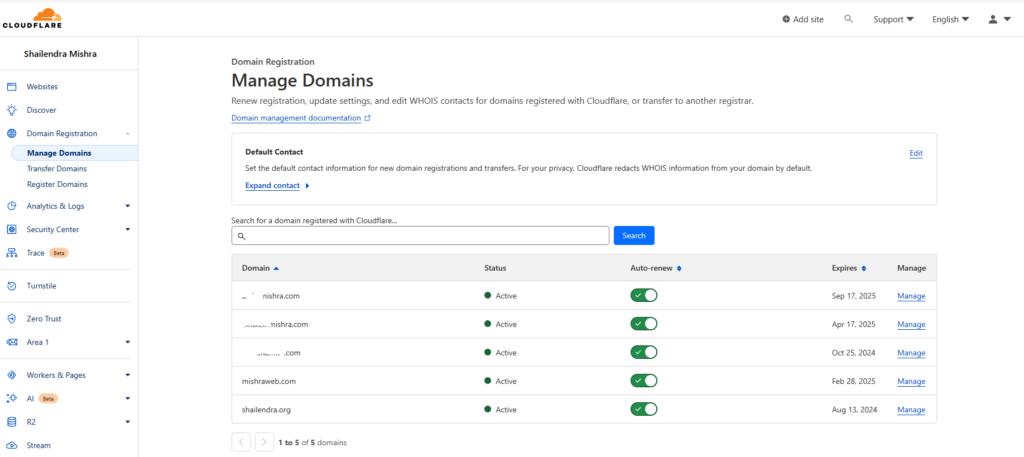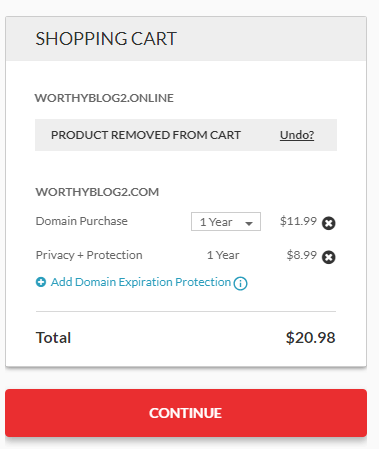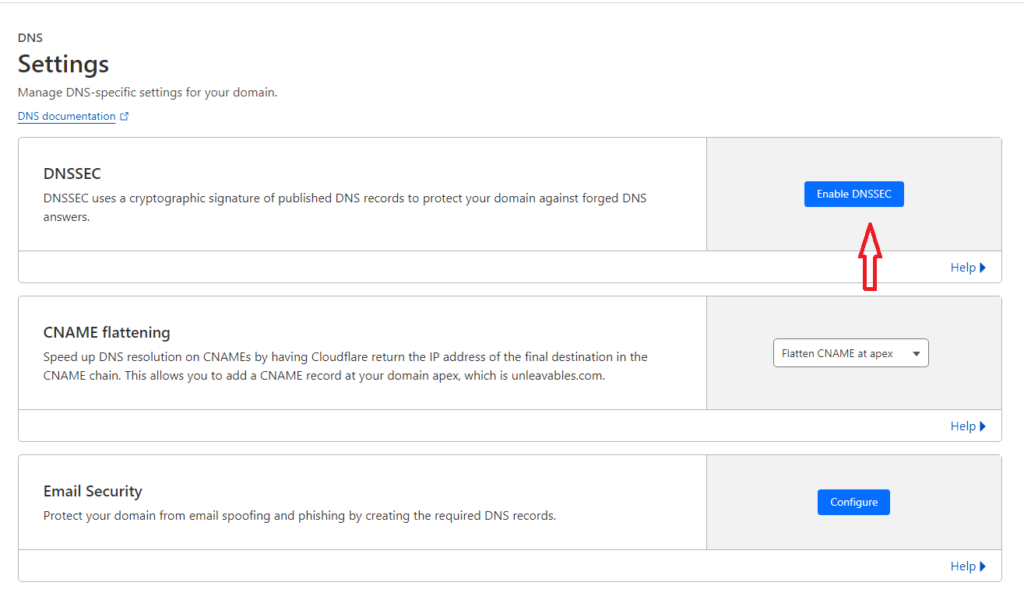Is Cloudflare Good For Domain Registration? : Full Review Of The Cheapest Registrar
A review of Cloudflare’s offerings as an ICANN-accredited domain registrar
A promise of the cheapest domain registration certainly raises some eyebrows. I know.
Though Cloudflare is no doubt a well-reputed technology giant with more than 30% of Fortune 1000 companies as its clients, when it comes to domain registration, there are concerns to address other than trust and security.
I assume you already know about Cloudflare and its free suite of services. So, I will not review the Cloudflare platform. It is great, and I recommend it on my resources page.
In my Cloudflare domain registrar review, I will only review Cloudflare’s offerings as a domain registrar, the good and the bad.
You will understand why Cloudflare is my second favorite domain registrar. (First is of course, Dynadot)

Table of Contents
Yes, Cloudflare has the cheapest domain renewal prices in the market
Let me address the zeroth question right away.
Cloudflare is indeed a zero-markup domain registration with no hidden terms, unfair contracts, or surprise charges.
The prices you see are the prices you get, even on renewals, unless the respective registry raises the wholesale price charged to Cloudflare in the coming years. You can see the latest pricing on this Cloudflare Domain Pricing page.
And since they charge the wholesale price to you at cost (which means they do not add any markup or spread to the wholesale price charged to them) they are guaranteed to be the cheapest domain registrar that exists.
It means that they sell you domain registration service at a loss, as they still have to absorb costs like:
- Payment processing charges (2%-5% of the transaction amount)
- ICANN accreditation fee ($4000 per year)
- Legal and technical expenses related to contracts with various registries.
- In-house infrastructure costs for backend and
- customer support.
Things you would like about Cloudflare domain registrar
You are already using Cloudflare DNS.
Cloudflare’s DNS manager is one of the best free tools for bloggers or webmasters.
DNS is the entry point for using other free Cloudflare services like CDN, SSL, Caching DNSSEC, Page rules, etc.
So, whenever I onboard a client, I ask them to change nameservers to Cloudflare and take control of the domain with the Cloudflare DNS dashboard.
Thus, all the websites I manage exist in a single Cloudflare dashboard.
If your domain registrar has no other duty than to forward the nameservers to Cloudflare, and everything else is controlled from the Cloudflare dashboard, why not register the domain in the Cloudflare dashboard itself?
No-markup (at-cost) domain registration, transfer & renewal
Every domain registrar (like Godaddy, Namecheap, Dynadot, etc.) must pay a wholesale price to the TLD registry and an ICANN fee for every domain registration.
That is all Cloudflare charges you for domain registration, renewal, or transfer.
As explained above, Cloudflare absorbs many expenses on your behalf to provide you the lowest prices for almost every domain TLD they offer.
Most popular registrars regularly offer first-year discounts on registration and sometimes on transfers, but they cover this loss as a marketing expense and cover it in subsequent years when you renew your domain at much higher prices.
While Cloudflare offers you the same low prices on renewals and never covers the loss.
All Cloudflare registrations are private registrations at no fees
Some domain registrars charge extra fees for masked WHOIS, also known as private registration. This feature lets you hide your name, email, and address from Whois’s public records.
Some registrars charge for protection from domain theft and transfer by offering two-factor authentication of some kind.

Most good registrars, however, do not charge you for these privacy and protection features, but they always have something to upsell, like SSL and emails.
Cloudflare has no upsell to offer you and offers better privacy and protection.
Cloudflare’s free built-in privacy protection shields your personal information from public WHOIS databases.
Cloudflare also offers account security features like two-factor authentication.
You are not locked into any contract with Cloudflare
ICANN requires all its accredited registrars to follow several rules regarding domain transfers.
Registrars can not bind any customer from transferring out their domains to other registrars for any reason at any time while their registration is active, except for a mandatory 60-day cool-down period after registration or the last transfer.
It means that if you do not like Cloudflare or your requirements change, you can transfer out anytime without hassle.
To be clear, it is an ICANN rule applicable to all registrars, not just Cloudflare.
A free and 1-click DNSSEC activation and other features
DNSSEC is an underrated domain security protocol. In fact, Cloudflare played a big role in popularizing DNSSEC, and I learned about it because Cloudflare offers it.
Just like you should use HTTPS instead of HTTP for all your website browsing, you should use DNSSEC (DNS Security Extensions) for all your domains to protect them from certain vulnerabilities.
Many good registrars offer DNSSEC for free, some offer it for extra fees, and many do not offer DNSSEC at all.
Even for registrars that offer DNSSEC, it can be automatically activated only if you use their nameservers as authoritative nameservers (which means default DNS, no Cloudflare).
It means that if like me, you use Cloudflare, activation of DNSSEC is no more automatic.
But if you register your domains on Cloudflare, you get 1-Click DNSSEC activation.

Similarly, you can activate email forwarding and email fraud protection very easily.
Cloudflare is ICANN accredited and enjoys a great reputation
Being ICANN-accredited, Cloudflare demonstrates a commitment to industry standards and best practices. It means that your domain registration is safe with a company that is not likely to be shut down or terminated by ICANN.
Caveats of Cloudflare Domain Registrar you should know
User Interface may be overwhelming for newcomers
If you are not already familiar with the Cloudflare dashboard, get ready to be overwhelmed.
It’s not because its UI is bad. But because it has so many buttons and tabs. It does not look like a domain registration control panel at all.

There are all the basic operations like setting auto-renewal to on/off and renewing/transferring a domain.
If you will use Cloudflare DNS and other features anyway, you should familiarize yourself with the dashboard after all.
No Bulk Tools Other Than API
The good thing is that Cloudflare offers API to manage your domain registrations in bulk.
The bad thing is that it is all Cloudflare offers for bulk management.
So, you must go through each domain individually if you want to bulk edit multiple domains, like changing contact information, adding a TXT record, or even renewing/transferring it.
Unless, of course, you know how to use its API.
It is my biggest deal-breaker and the biggest reason I do not passionately recommend this awesome registrar to other bloggers.
You can’t use Nameservers feature
Any domain registrar allows you to point your nameservers anywhere you want.
This makes it possible for you to use Cloudflare by pointing your nameservers to it, no matter where your domain is registered.
But Cloudflare doesn’t allow that. If your domain is registered on Cloudflare, you have to use it as your DNS manager and other features it offers in its dashboard.
This is the only restriction Cloudflare puts on all domain registrations, it is even mentioned in its terms of service.
Why?
I guess it is the only reason Cloudflare entered the domain registration business.
To attract new customers into its ecosystem and put an exit barrier.
Cloudflare offers only private registration.
I mentioned the free WHOIS privacy Cloudflare offers to everyone.
But there is a catch. There is no other option.
You can not register a domain with your WHOIS information publicly available.
There is no option for that.
Most customers would be happy with privacy. There exist use cases for your company information that are publicly available. Unfortunately, you have to avoid Cloudflare if you want that.
Cloudflare doesn’t Support Many TLDs
I should have told you this earlier, but Cloudflare supports very few TLDs.
While Cloudflare supports popular TLDs, the selection is less extensive than most other registrars.
So, if you want to register or transfer a ccTLD or an uncommon TLD, you should check this list out. They currently offer about 350 TLDs, with about a dozen coming soon.
This excludes most country TLDs as well. They offer only .US and .UK domains with some generic country TLDs like .CC .CO .IO .ME etc.
This is because each of such country TLDs is administered by respective countries with their own set of regulations. So, there are several individual relationships to be maintained to remain compliant.
No support for Internationalized Domain Names (IDNs)
If your domain is an IDN (it contains a non-English character), then unfortunately, it is also not supported by Cloudflare.
The possible reason may be technical or because such domains are often used for phishing and other cybersecurity threats.
No support for registry premium domain names
If your domain comes with a non-standard renewal cost
As a domain investor, I understand that there is money to be made for the registrar in the form of commissions, but Cloudflare avoids it altogether.
The possible reason that comes to my mind is that it does not want to be associated with high fees at all to avoid bad publicity.
Customer support is definitely lacking.
I faced an issue when one of my domains was auto-renewed without notice. Maybe their renewal reminder emails were incorrectly configured and did not reach me.
Knowing a lot about ICANN policies, I was certain that this renewal could be canceled for a full refund up to 30 days after the renewal date.
However, I realized their email support is too slow and uninformed (at least in the domain registration field). It took me 40+ days to convince them and get the refund.
They offer forum support, too, but it is worse. There is no guarantee that your post will be answered. Many support tickets are closed without proper resolution.
You should keep in mind that you rarely need support in the case of domain registrations. Everything works perfectly on automation. But when you need support, Cloudflare is not the best registrar.
Cloudflare is not for domain investors
If you are a domain investor, you always want to keep your renewal prices low as your portfolio grows.
You often compare renewal prices of several registrars and discover Cloudflare.
Hold your horses. Cloudflare is not for you.
Why?
Well, it is simply not built for domain investors.
They have no feature to bulk edit or bulk transfer domains. So it will be a nightmare to manage a whole portfolio here if the intention is to buy/sell regularly.
They do not support pointing nameservers, which are required to list your domain in marketplaces or landing page tools.
But more importantly, there is no support for fast transfer on Afternic or Sedo. Which reduces the visibility of listings so much that it is not worth it.
Instead, use my favorite registrar, Dynadot, for all your portfolio. It has excellent bulk domain management features and supports Afternic and SEDO fast transfer.
Your takeaway.
If you are a blogger or business owner with several domains in your name and use Cloudflare DNS and other Cloudflare services, bring your domain to Cloudflare as a domain transfer.
There are a few restrictions, but since you will need to set up a domain once and forget, Cloudflare is still the best option for most people as they guarantee that you will not have to compare renewal prices ever again.